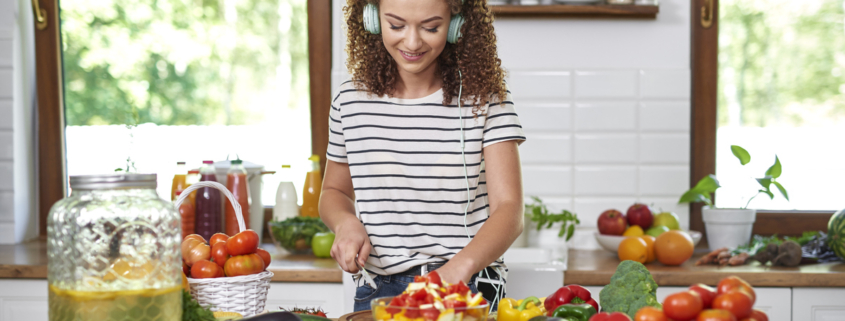Taking initiative around your health when you want to become a parent is a responsible choice. It’s wise to mind your health and set a good foundation for the little one you are helping to create. The list of what to eat and what not to eat during pre-pregnancy and while expecting can be overwhelming, but it doesn’t have to be.
Why Does Organic Matter?
Choosing organic foods can limit your exposure to pesticides, which can act as endocrine disruptors and carcinogens within the body. Higher levels of pesticides can also be linked to lower pregnancy rates and/or lower birth weights.
Conventionally grown produce is sprayed with multiple types of pesticides many of which have been implicated in causing things like cancer and influencing infertility. In 2017 The EARTH (environment and reproductive health study) showed eating higher pesticide residue vegetables and fruits was associated with lower rates of pregnancy and live birth following infertility treatment. These findings were consistent with prior animal studies displaying a similar result.
What is the Dirty Dozen and Clean 15?
A simple guideline to follow is using what’s called the “Dirty Dozen” and “Clean 15” lists. Every year the Environmental Working Group releases Dirty Dozen and Clean Fifteen guides. In 2020 EWG analyzed 47 items and compiled their list.
The dirty dozen were the top 12 fruits and vegetables with the highest pesticide content in the analysis.
- Strawberry – rich in antioxidants
- Spinach – packed with iron, folate, and zinc
- Kale – high in iron, folate, calcium, and manganese
- Nectarines – rich in selenium and vitamin C
- Apples – high in vitamin C and fiber
- Grapes – packed with vitamins C and K and rich in antioxidants
- Peaches – rich in selenium and vitamin C
- Cherries – excellent source of vitamin C, zinc, calcium, iron, magnesium and vitamin B6.
- Pears – high in vitamin C and fiber
- Tomatoes – an excellent source of lycopene
- Celery – high in anti-inflammatories and fiber
- Potatoes – sweet potatoes are high in vitamin C, zinc, calcium, iron, magnesium and vitamin B6 as well as antioxidants
- Hot peppers ( an extra item on the list this year) – rich in vitamins A, B, C, and E and some studies suggest capsaicin acts as an antioxidant to protect your cells and helps tamp down inflammation
The “Clean 15” conversely had the lowest levels of pesticides.
- Avocado – great source of vitamin E, antioxidants, and monounsaturated fats
- Sweet corn – contains folic acid, zeaxanthin, and pathogenic acid
- Pineapple – high in bromelain, an anti-inflammatory and anti-coagulation
- Onions – high in sulfur which helps promote the antioxidant glutathione
- Papaya – contains folate, vitamin A, magnesium, copper, and pantothenic acid
- Sweet peas frozen – rich in magnesium, potassium, and calcium
- Eggplant – high in fiber, potassium, vitamin C, vitamin B-6, and antioxidants
- Asparagus – rich in folate
- Cauliflower – high in vitamins C, K, B6, and folate
- Cantaloupe – an excellent source of beta carotene, vitamin C, and folate
- Broccoli – rich in iron and folate
- Mushrooms – source of vitamin D
- Cabbage – an excellent source of beta carotene, vitamin E, and folic acid
- Honeydew melon – contains a high amount of vitamin C
- Kiwi – rich in vitamin C and folate
Don’t misunderstand that the Clean 15 is free from pesticide use. Why is the Clean 15 somewhat “safer” then? It’s because many, although not all, of these fruits and vegetables have a layer of protection in the outer layer of their skin. Others, such as cabbage and asparagus, contain naturally occurring enzymes that help to protect against pests and therefore require fewer pesticides to protect them during commercial growing.
How to Make Organic Food More Affordable
Many of my patients have expressed concern about the increased cost of shopping organic. One thing I would like to stress is not to let the list prevent you from adding a variety of vegetables and fruits to your diet. There are ways you can cut costs without cutting out these important sources of nutrients from your diet.
- Visit farmers’ markets or get to know local farms or farmers Many farms do not have the organic label but do in fact use organic practices.
- Buy seasonal produce as its typically less expensive when in-season.
- Look for frozen organic fruits and vegetables. Frozen produce tends to be lower in cost but still high in nutrients because they are flash-frozen.
- Look for store brand organic produce or budget-friendly stores. Certain stores are known to be more expensive (Whole Foods, for example) or more affordable (such as Aldi or Trader Joes). While in the stores shop the sales and look for in-season produce. When you purchase out of season, that will typically mean a higher price tag because of the cost in transportation to get the items to your local market.
- Stick to basics. You will do better with your grocery budget purchasing organic, whole foods instead of splurging on organic snack chips, organic cookies, and so on. These items tend to be expensive, and even though they may be organic, they tend to have unnecessary sugars and ingredients that should be enjoyed on rare occasions. Remember, we are looking to nourish the body with food. It’s best to learn to satisfy your sweet tooth with fruits (one of my favorites is fresh organic berries tossed with some high-quality balsamic vinegar for about 10 minutes to draw out the extra sweetness and then served with organic, full-fat, grass-fed Greek yogurt or coconut milk or nut milk of you are dairy-free and a small amount of farm-fresh honey. Be sure to choose yogurt that is free of added sugars.)
Remember each little step to reduce your exposure, is a step in the right direction. Check out the Dirty Dozen and Clean fifteen on www.ewg.org for more information. If you would like additional support around your own fertility journey and how integrative medicine might support you, contact me.



